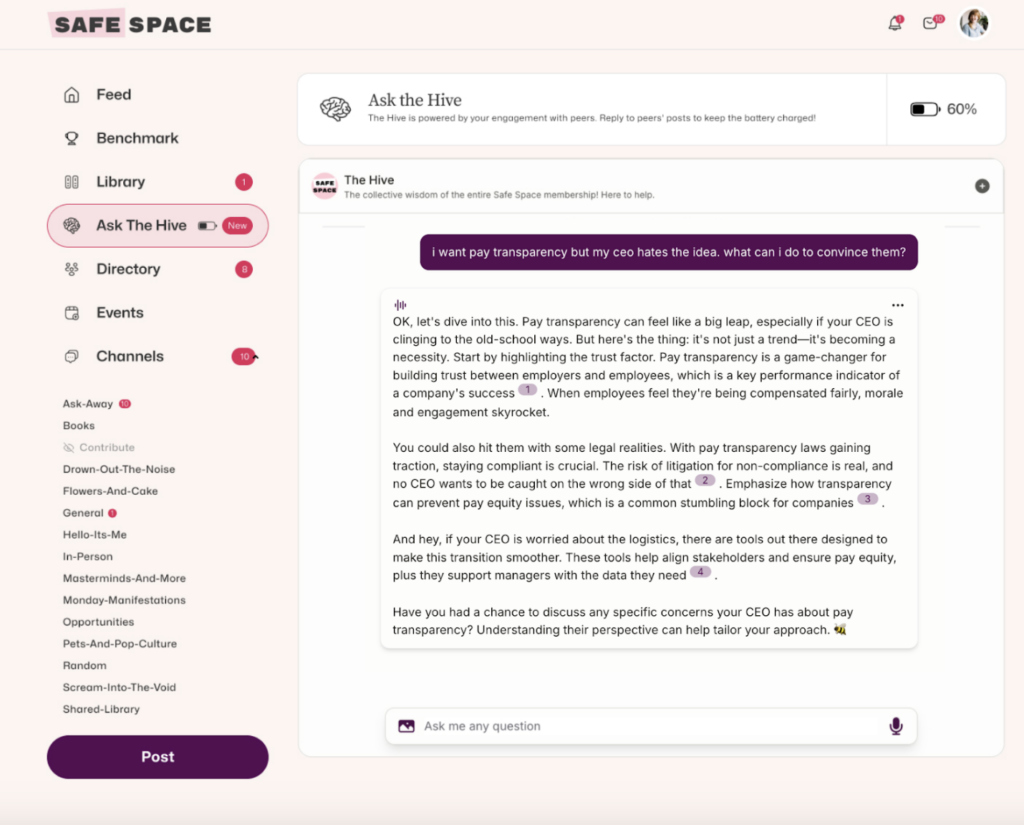Leadership Styles 101:
You got that James Dean daydream look in your eyes and I got insights into your leaders’ styles that you need… or something like that.
Leaders impact EVERYTHING at work, especially relationships.
Leaders can shape the dynamic between teams, employers and even other leaders influencing things like:
- Trust
- Collaboration
- Engagement
- Communication
- Morale
- Productivity
Not to mention, the style a leader has can set the tone for culture at an organization.
I’ll say it until I’m blue in the face: with great power comes great responsibility!
But so few leaders truly understand their own styles.
That’s where we can step in.
HR needs to be able to spot leadership styles to effectively give feedback to leaders and help manage the dynamic between employees & leadership.
We’re basically the watchers of the organization. Just call me Giles!
So, let’s get into 3 of the most common types of leadership styles.
#1: Autocratic Leadership
👩🏾⚖️Do you have a leader who makes decisions without taking input from anyone else?
Maybe they:
- Don’t delegate much (or at all)
- Give minimal autonomy to their team
- Are into hierarchy or status (ew)
- Are a fan of top-down communication
- Set clear expectations for performance and work with usually little flexibility
You might be dealing with a leader that has an autocratic leadership style.
There are pro’s and con’s to every leadership style.
✅Pros of this style:
- Clear direction: employees deal with little ambiguity because they know what’s expected of them
- Quick decision making: when you don’t have to consult others you can move quickly.
👎🏽Cons of this style:
JOIN 150K+ HR LEADERS
Get insights, learnings, and advice on how to build companies and cultures that people actually love.
No spam. Unsubscribe any time.
- Low morale: with this style employees can feel micromanaged, like they have no choices to make and their expertise isn’t being respected. Creativity can feel stifled which can impact innovation and problem solving.
- Leader dependence: ever try to make a decision about something and then everyone says they can’t until they talk to a specific leader? Woof that can be tough! With this style employees begin to rely on the leader and it can be catastrophic if the leader leaves.
This style of leadership can be good in times of crisis or in very hierarchical environments.
📖Notable leaders with autocratic leadership styles area Napoleon Bonaparte, Henry Ford, and Martha Stewart.
#2: Democratic Leadership:
🗳️Do you have a leader who makes decisions based on input from others?
Maybe they:
- Take input and feedback from a variety of folks prior to making decisions
- Empower team members to share their thoughts
- Value and prioritize open communication and exchange of ideas
- Focus on teamwork
You might be dealing with a leader that has an democratic leadership style.
✅Pros of this style:
- High employee morale: when employees feel like their opinions matter and their engagement and morale tends to be higher.
- Better decision making: when there are a variety of perspectives shared, more informed decisions can be made.
👎🏽Cons of this style:
- Potential for conflict: with more voices at the table there may be more conflicting ideas – but this can be healthy if managed well.
- Lack of direction: if a leader becomes too hands off and defers to group consensus it might be hard to pick a direction and go with it.
This style of leadership can be good when you have a variety of voices and perspectives in your organization that need to be heard. Sounds dreamy!
📖Notable leaders with democratic style leadership are Nelson Mandela, JFK, Indra Nooyi, and Sundar Pichai.
#3: Laissez-Faire Leadership
🤷🏾♀️Do you have a leader who is more hands off, defers to their team and gives them autonomy to make decision.
Maybe they:
- Provide little direction
- Have high trust in their team
- Empower employees to determine how their work gets done
- Have little involvement in the day to day
- Offer support over direction
You might be dealing with a leader that has a laissez-faire leadership style.
Fun fact: Laissez-faire means “let them do”
✅Pros of this style:
- Freedom and creativity: this type of leader creates space for employees to ideate and be creative about their path.
- Personal growth: employees become better at decision-making and problem solving under these types of leaders because they feel autonomy over their work. They can grow substantially and learn quite a bit.
👎🏽Cons of this style:
- Lack of direction: this leader isn’t going to dictate what employees should do and that can lead to confusion or incorrect priorities.
- Potential risk for conflict: if there is no oversight there may be unclear boundaries leaving team members more prone to conflict.
- Not suitable for all teams: more junior teams or ones that crave structure and support above all might struggle under a leader with this style.
This style of leadership might work best with highly skilled teams or ones that are more creative. I’ve personally seen this style at many startups.
📖Notable leaders with democratic style leadership were Warren Buffet, Steve Jobs (the later years), and Queen Victoria.
HR & Leadership:
Sometimes (most times??) we are the mirror for leaders.
We point out the impact of their action and help them understand potential consequences of how they lead.
And we have KEY INSIGHTS into the organization – many leaders don’t understand how their style may have to change depending on what the organization needs.
📣Truthfully, no one is born a good leader. No one wakes up one day and goes, “You know what? Today is the day I’m gonna be the best leader ever” and then in the snap of the finger they’re great.
No, no, no, unfortunately it doesn’t work like that.
It takes work. And it takes learning some lessons, sometimes hard ones.
So if you want the best dang leaders ever at your organization – you need to be comfortable with giving leaders feedback about their behavior and how to shift their style.
Ground the feedback in:
- Impact: how are their behaviors impacting things like engagement, morale, etc
- Organizational values: how are their behaviors supporting or contrasting the org’s values?
If that doesn’t work consider:
- Sharing 360 feedback – what does their team think?
- Conducting trainings to reinforce your feedback
- Leaning on other leaders to share feedback
Lots of opportunities here – but there’s one thing I haven’t touched on yet…
Power Play:
Power dynamics at work can be… tricky.
Who really has the power?
Is it HR?
Maybe or maybe not…


